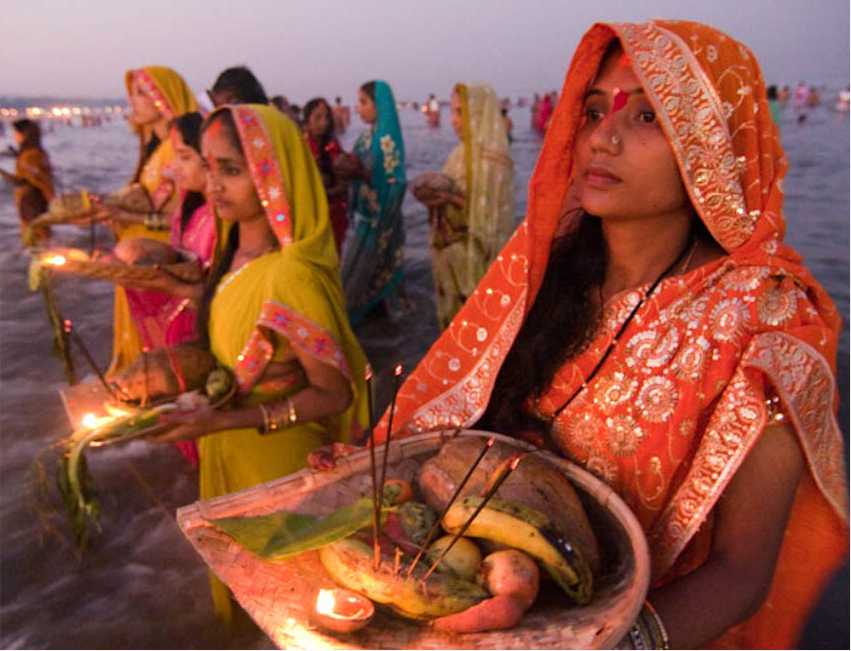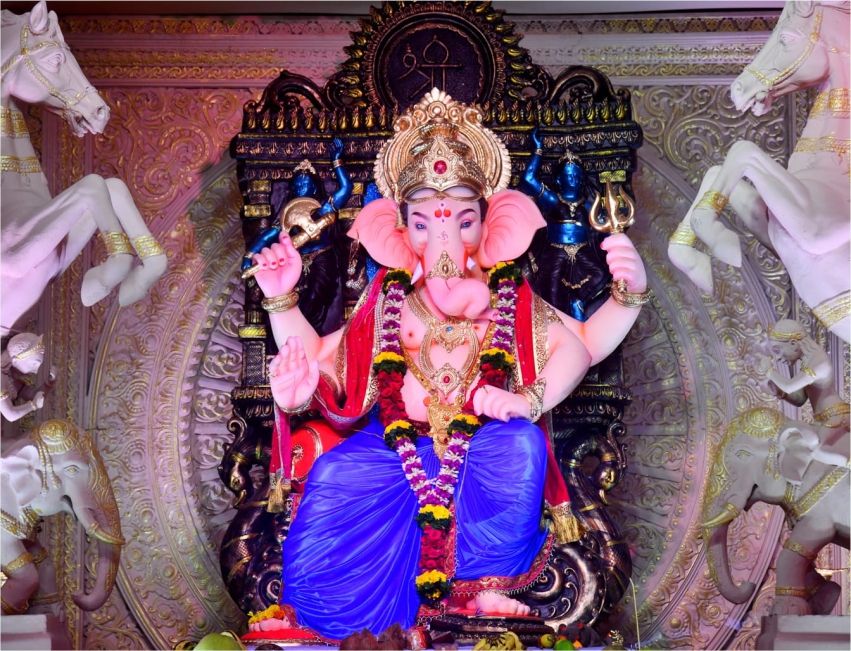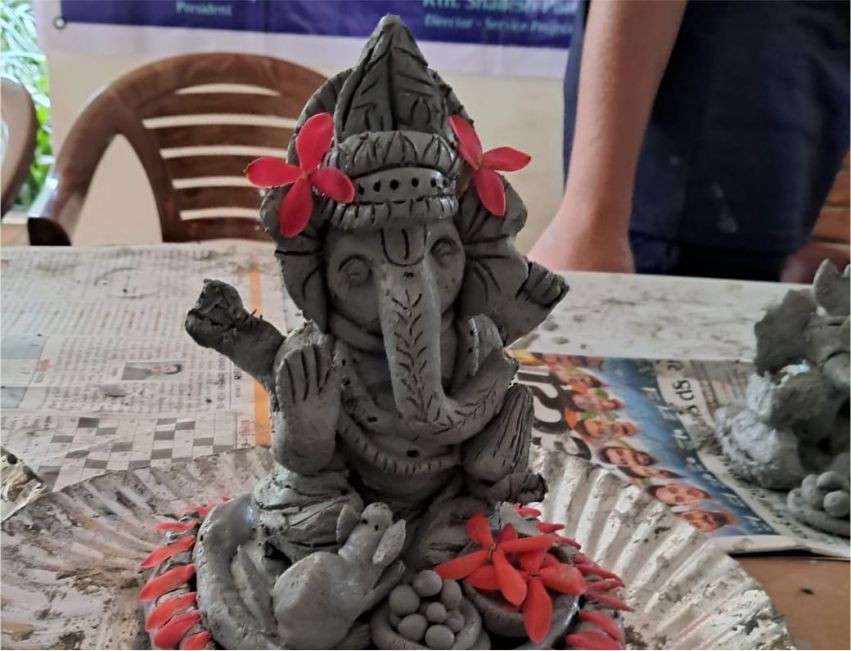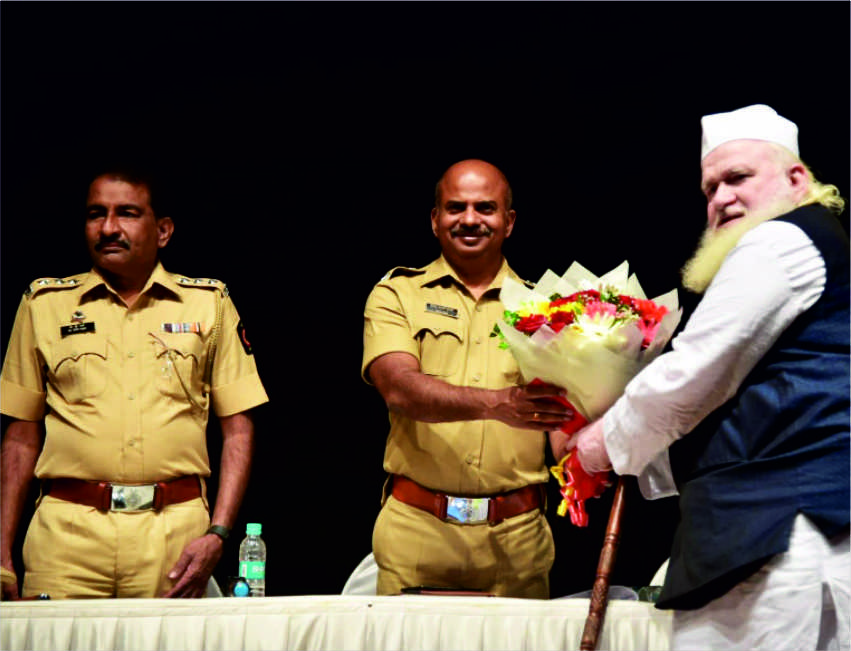Know about the significance of Chhath Puja and its traditions

- Chandrashekhar Hendve
- 18 Nov, 2023
Chhath Puja is a Hindu festival dedicated to the worship of the Sun God, Surya, and Chhathi Maiya, who is considered to be the consort of Surya. While there isn’t a specific mythological story directly associated with Chhath Puja, the festival is often linked to various Hindu epics and legends that highlight the importance of the Sun and its energy in sustaining life on Earth.
One popular belief is that Chhath Puja has its roots in the Mahabharata. It is said that Draupadi, the wife of the Pandavas, used to observe a similar vrat (fasting) for the well-being and prosperity of her husbands. Draupadi's devotion to the Sun God and her observance of this ritual is believed to have contributed to the victory of the Pandavas.
Another association comes from the Ramayana, where Sita, the wife of Lord Rama, is said to have observed a fast for the well-being and prosperity of her husband. Sita’s devotion and her adherence to the Chhath rituals are considered exemplary.
While there may not be a specific mythological narrative exclusively dedicated to Chhath Puja, these connections to characters and events from the epics contribute to the cultural and religious significance of the festival. Chhath Puja is mainly celebrated in the states of Bihar, Jharkhand, Uttar Pradesh, and in some regions of Nepal, and it involves rigorous rituals such as fasting, taking dips in holy rivers, and offering prayers to the setting and rising sun. The festival is observed with great devotion and is an occasion for family and community celebrations.
Here is how Chhath Puja is typically celebrated:
Nahay Khay (Day 1): The first day is known as Nahay Khay, during which devotees take a dip in a holy river or pond and bring back the holy water to prepare the offerings. The devotees observe a fast on this day and eat only once.
Lohanda (Day 2): On the second day, known as Lohanda or Kharna, the devotees fast from sunrise to sunset. In the evening, they prepare kheer (a sweet dish) and chapatis, which are offered to the Sun God after the sunset. The family and friends partake in this prasad (offering) together.
Sandhya Arghya (Day 3 - Evening): The third day is the main day of Chhath Puja. Devotees fast throughout the day and break their fast in the evening after offering Arghya (offering of water) to the setting sun. This is usually done at a water body like a river or pond. The rituals involve standing in water and offering various items like fruits, sugarcane, and special thekua (a sweet dish) to the Sun God.
Usha Arghya (Day 4 - Morning): On the fourth day, devotees wake up before sunrise and head to the water body to offer Arghya to the rising sun. This marks the conclusion of the Chhath Puja rituals. After the sunrise, devotees break their 36-hour long fast.
During these four days, devotees maintain cleanliness, purity, and strict discipline. The rituals are performed with great devotion and involve family and community participation. Chhath Puja is not only a religious festival but also a significant cultural event that fosters a sense of community and social harmony. The festival is marked by traditional songs, hymns, and cultural performances.




